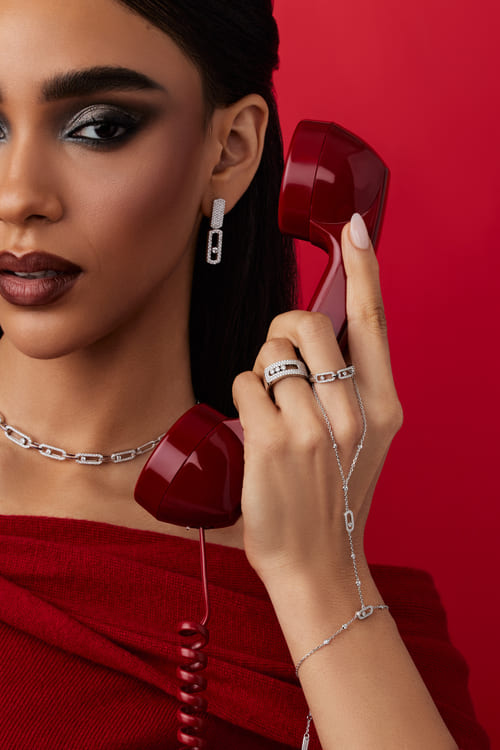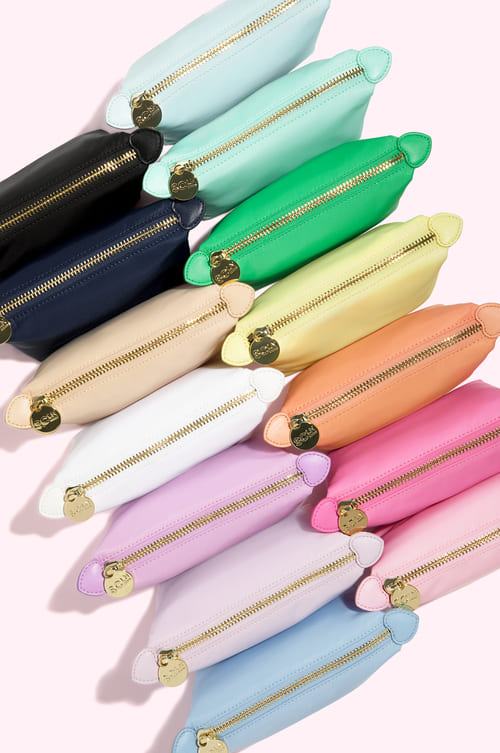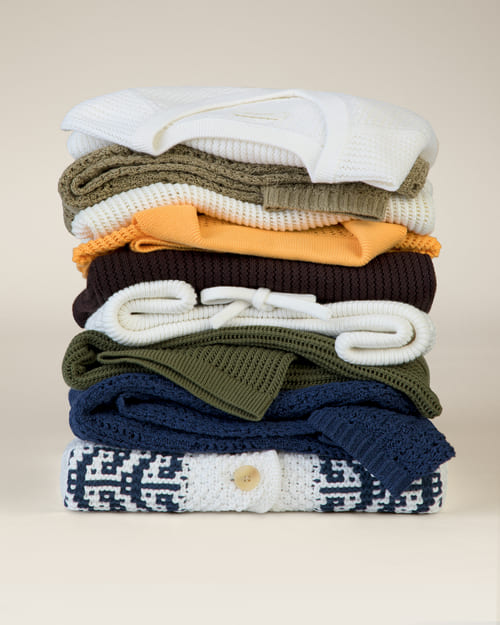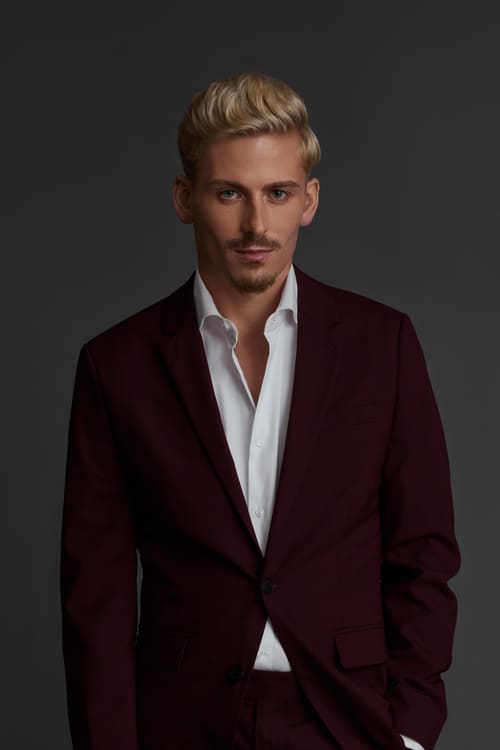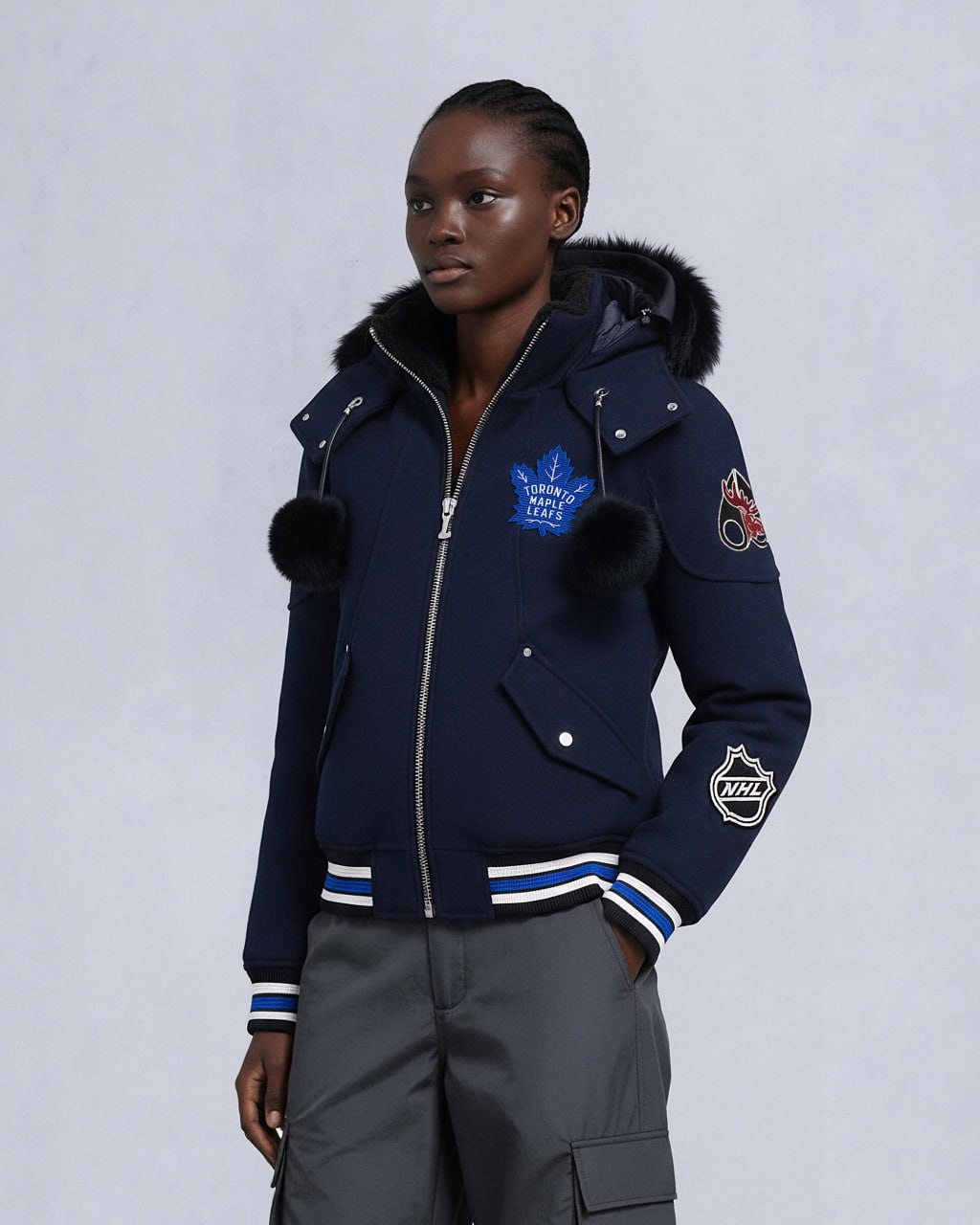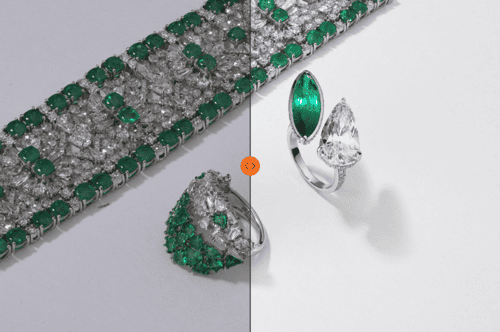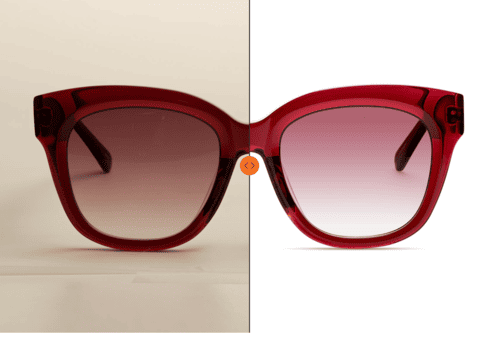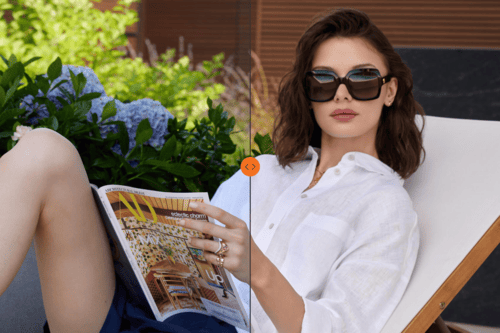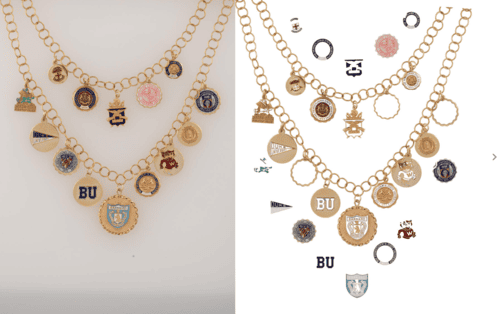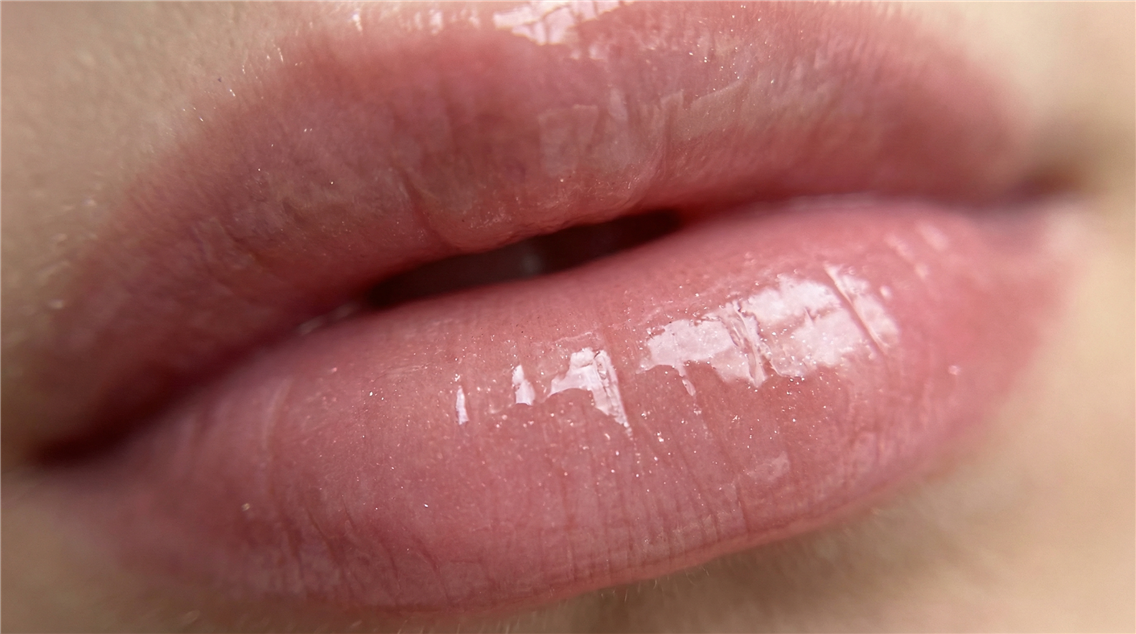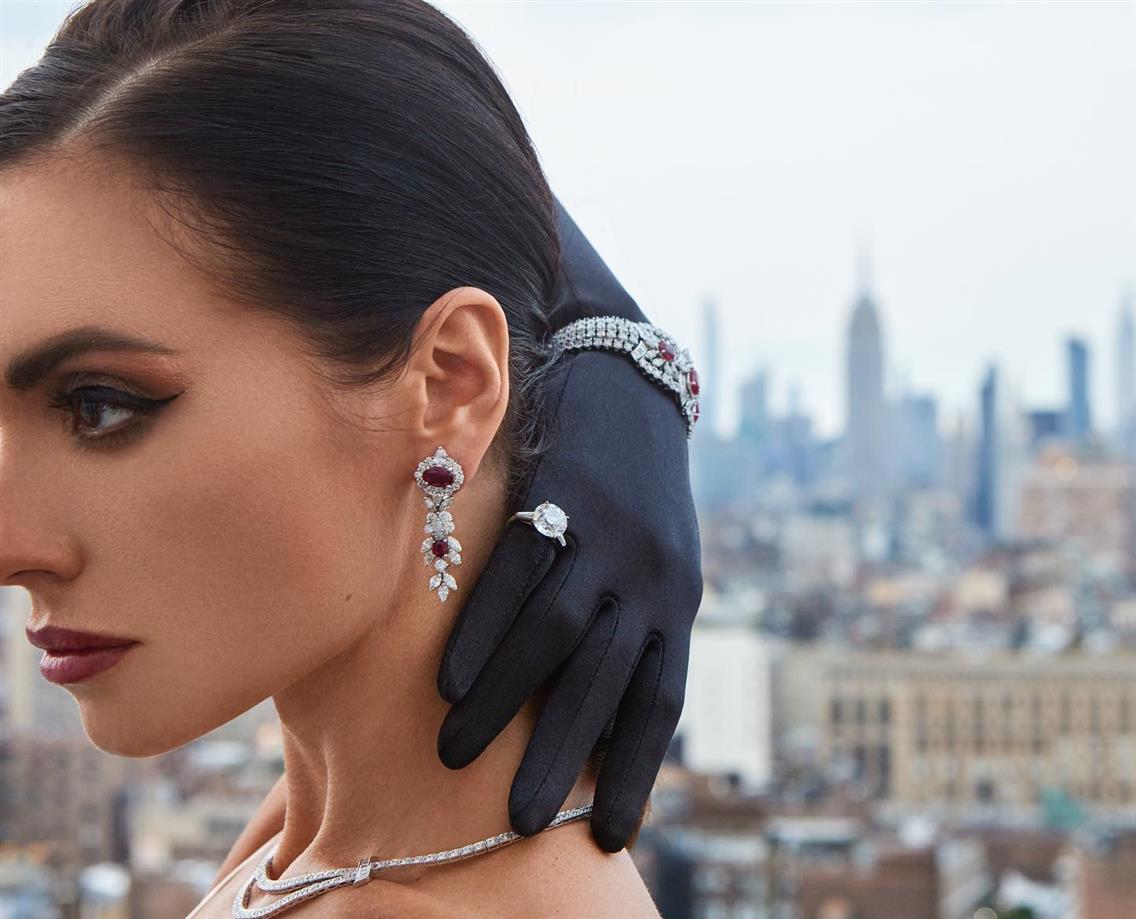The Smart Way to Find and Choose Models for Your Brand Photoshoot
Models play a transformative role in commercial photography. They are not just faces but storytellers who breathe life into your products, helping customers envision themselves using or wearing them. The right model can elevate your brand's image, foster emotional connections with your audience, and drive conversions by making your products more relatable and desirable.
A well-chosen model doesn’t just showcase a product; they embody your brand’s identity. Whether you’re selling high-end fashion, jewelry, skincare products, or even tech gadgets, the model you select can influence how your audience perceives your brand. Their look, demeanor, and ability to communicate the essence of your product visually can make the success of your campaign. That’s why finding and selecting the right model is a process that requires careful thought and planning.


Start with a Mood Board Creation to Clarify Your Vision for the Photoshoot
Before you even begin searching for models, it’s essential to have a clear vision of what you want to achieve with your photoshoot. A mood board is a powerful tool that helps you define this vision.
Why Create a Mood Board?
A mood board serves as the foundation for your creative process. It allows you to:
Define Your Visual Style: Decide on the overall aesthetic — minimalist, bold, vintage, modern, etc. — that aligns with your brand.
Plan Poses and Storytelling: Identify the types of poses or scenarios that will best showcase your products.
Specify Model Types: Determine the physical attributes (age, body type, gender, etc.) that align with your target audience and product needs.
How to Build Your Mood Board
- Gather Inspiration: Collect images from Pinterest, Instagram, fashion magazines, or previous campaigns that resonate with your brand’s vision.
- Include Model References: Add examples of models whose look aligns with what you envision for your campaign.
- Collaborate: If you have a creative director or team, involve them in this process. For smaller brands without a dedicated team, take time to refine the concept yourself.
- Communicate Clearly: Share this mood board with your photographer and their creative team early in the planning process. This ensures everyone is aligned on expectations before casting begins.
A detailed mood board clarifies your vision and streamlines the model selection process by providing a clear framework for what you're looking for.
How to Find Models for Your Brand
Using Social Media
Social media has become a powerful tool for discovering potential models. While brands may not scout directly, they can still use social media platforms to identify potential talent. Leverage social media to identify promising talent and then pass along these leads to professional scouts or agencies for further vetting and management. This approach ensures professionalism, saves time, and aligns with industry best practices. Some ways to find faces on social media
- Search Relevant Hashtags: Use hashtags like #newface, #modelsearch, #fashionmodel, or niche-specific tags (e.g., #fitnessmodel or #beautymodel) to find individuals who align with your brand’s aesthetic.
- Explore Geotags: If your shoot is location-specific, search geotags for your city or region (e.g., #NYCmodels or #LondonModels) to find local talent.
- Follow Modeling Communities: Many aspiring models showcase their portfolios on Instagram or TikTok. Following modeling communities or model agencies’ accounts that feature up-and-coming talent can help you discover fresh faces.
- Engage with Content Creators: Some influencers or micro-influencers with modeling aspirations may also fit your brand’s needs. Their existing audience can add an extra layer of value if they align with your target demographic.
Once you’ve identified potential candidates on social media, the next step is to pass their profiles or contact details to professional scouts or agencies for evaluation.
Using Professional Agencies
When it comes to finding models for your brand, professional modeling agencies play an essential role in ensuring quality, professionalism, and efficiency. While some brands may consider scouting talent independently, most serious brands recognize the value of partnering with established agencies that specialize in connecting models with clients. When selecting a modeling agency to partner with, consider the following factors:
Reputation: Research the agency's reputation within the industry by reviewing client testimonials and success stories from other models.
Specialization: Some agencies focus on specific niches (e.g., fashion, commercial, promotional). Choose an agency that aligns with your brand's needs.
Portfolio Diversity: Look for agencies that represent a diverse range of models to ensure you have access to talent that reflects your brand's values.
Communication Style: Assess how well the agency communicates with you during initial interactions; clear communication is vital for successful collaboration.
Booking Platforms
In the evolving landscape of the modeling industry, booking platforms have emerged as a vital resource for brands seeking to connect with models efficiently and effectively. These platforms streamline the hiring process, enabling brands to find, book, and manage talent without the traditional complexities associated with modeling agencies. Below, we explore various booking platforms available for brands and their unique features:
Ubooker
Ubooker is a premium online booking platform connecting top models, photographers, stylists, and other creatives. It allows brands to post jobs, browse talent, and book models while saving up to 30% in booking fees. Users appreciate its efficiency and the ability for models to manage their schedules directly.
Swipecast
Swipecast simplifies the casting process by allowing brands to book talent directly without going through an agency. This platform focuses on streamlining bookings and enhancing communication between clients and models.
ModelMayhem
ModelMayhem connects freelance models with clients looking for talent across various industries. Brands can browse profiles, view portfolios, and communicate directly with models to negotiate terms.
Newbook Models
Newbook serves as a one-stop destination for finding and booking models and influencers for various projects, including photoshoots and events. The platform provides access to hundreds of local models while facilitating easy communication between clients and talent.
Booking platforms represent a significant advancement in how brands find and hire models in today's fast-paced market. By offering user-friendly interfaces, diverse talent pools, direct communication channels, and cost-effective solutions, these platforms empower brands to engage with models more efficiently than ever before. As the modeling industry continues to evolve, leveraging these digital tools can be a good solution for brands aiming to maintain a competitive edge.
‘Should I Work With a Modeling Agency or Freelance Models?’
When deciding whether to work with a modeling agency or to hire freelance models, it’s essential to weigh the pros and cons of each option. Both paths offer unique advantages and challenges that can significantly impact your brand's modeling needs, budget, and overall project goals.
Working with a Modeling Agency
Advantages
- Professionalism and Experience: Agencies provide access to experienced models who are trained to represent brands effectively. This is particularly useful for complex shoots requiring specific skills, such as acting or posing in challenging ways.
- Reliability: Agencies ensure professionalism, punctuality, and consistency. If a model cancels, agencies often provide replacements quickly, minimizing disruptions.
- Portfolio and Expertise Matching: Agencies can recommend models whose portfolios align with your brand’s identity and target audience, saving time in the selection process.
- Legal and Contractual Support: Agencies handle contracts, ensuring compliance with industry standards and protecting both your brand and the model
- Streamlined Process: Agencies manage all logistics related to hiring models, saving you time and effort. From scheduling fittings to negotiating rates, they handle the administrative workload so you can focus on creative direction.
Disadvantages
- Higher Cost: Agency models typically come with higher fees due to commissions and agency overheads, which may not suit smaller budgets.
- Less Flexibility: Agencies often have strict policies regarding model availability or exclusivity. If your shoot requires last-minute changes or unconventional requests, working through an agency may limit your options.
- Standardized Contracts: While agencies provide legal support, their contracts may be less flexible to accommodate unique needs (e.g., extended usage rights or specific licensing terms).
Hiring Freelance Models
Advantages
- Cost-Effectiveness: Freelance models are often more budget-friendly, making them ideal for smaller brands or projects with tight financial constraints.
- Direct Communication: You can work directly with freelance models, allowing for more flexibility in discussing creative ideas and expectations.
- Diverse Talent Pool: Freelancers often promote themselves on platforms like Instagram or modeling websites, giving you access to a wide range of talent that may not be tied to agencies.
- Flexibility in Negotiations: Freelance models are often more open to negotiating rates, usage rights, or specific project requirements compared to agency-represented talent.
Disadvantages
- Vetting Process: Freelancers require thorough vetting to ensure they have the skills and professionalism needed for your shoot. This can be time-consuming
- Risk of Unreliability: Without agency backing, there is a higher risk of cancellations or unprofessional behavior that could disrupt your shoot.
- Limited Experience: Some freelance models may lack experience in representing brands effectively or working in professional settings.
Whether you choose an agency or freelancer, ensure the model aligns with your brand’s image, values, and target audience. Their look, persona, and ability to embody your brand’s story are critical for creating impactful visuals. Weigh the cost against the value the model brings to your campaign.
For high-stakes projects where quality is paramount, an agency model may be worth the investment; for smaller campaigns, freelancers might suffice. For intricate shoots requiring acting skills or challenging poses, agency models are often better equipped due to their training and experience. For simpler shoots, freelance models can be a cost-effective option.
If your brand prioritizes professionalism, reliability, and alignment with a specific vision, working with an agency is likely the better choice. However, if you have budget constraints or prefer more flexibility and direct collaboration, freelance models can be a viable alternative.
Things to Consider Before You Start Looking for Models
Before diving into the process of selecting models for your brand photoshoot, it’s crucial to take a step back and evaluate several foundational elements. Understanding your audience, defining your brand identity, establishing clear objectives for the photo shoot, aligning with product needs, and setting a budget are all critical components that will guide your model selection process. Below, we delve deeper into each of these considerations.

Understand Your Audience: Who Are You Targeting With This Photoshoot?
Understanding your audience is paramount when selecting models. The model should resonate with the target demographic you aim to reach. Here are some factors to consider:
Demographic Characteristics: Identify the age, gender, income level, and lifestyle of your target audience. For example, if your product caters to young professionals, look for models who embody that demographic — perhaps those who are stylish and relatable to this group.
Psychographics: Go beyond demographics to understand the values, interests, and behaviors of your audience.For example, if you’re targeting eco-conscious consumers, choosing models who advocate for sustainability or have a natural look can enhance authenticity.
Cultural Relevance: Consider cultural trends and representation. A diverse range of models can help your brand connect with a broader audience and demonstrate inclusivity.
Define Your Brand Identity: What Do You Want Your Brand to Communicate?
Your brand identity is the essence of what you stand for and how you want to be perceived in the market. This identity should inform your model selection. Determine what emotions or values you want to be associated with your brand. For instance, Luxury brands may require elegant-looking models who exude sophistication and exclusivity. Sustainable brands might prefer models who reflect natural beauty, avoiding heavy makeup to align with eco-friendly principles.
Your choice of models should align with your visual branding. If your brand has a youthful and vibrant aesthetic, choose models that reflect that energy. Ensure that the models you select are consistent with previous campaigns to maintain brand recognition and loyalty among consumers.
Define Your Photoshoot Objectives
Your objectives will guide the selection of models, the types of shots you need, and how you intend to use the images. Understanding the primary purpose of your photoshoot is essential. Different objectives will dictate different modeling styles and characteristics:
E-commerce Product Photography: If your goal is to create catalog images for online listings, you’ll need models who can showcase products effectively. This often requires models who can demonstrate the fit and functionality of clothing or accessories, so look for individuals with relatable body types that reflect your target demographic.
Lifestyle Campaigns: For dynamic lifestyle shots intended for social media or advertising, choose models who can convey emotion and authenticity. These models should be able to interact naturally with the environment and product, showcasing a lifestyle that resonates with your audience.
Editorial Shoots: If you’re aiming for high-fashion editorial images, select models who can embody artistic concepts and portray a range of emotions. This requires versatility and an ability to adapt to various themes, so consider models with experience in editorial work.
You also need to define what message you want to convey through the images. For example, if you're promoting an activewear line, you may need models who can demonstrate athletic movement effectively.
Align With Product
When selecting models for your photoshoot, it's essential to consider how specific physical features enhance the presentation of your products. Different types of products — such as clothing, shoes, and jewelry — require models with distinct attributes that highlight the product's characteristics and appeal to your target audience. Here’s a deeper look at what to consider for each type of product.
Clothing Models
Choosing the right model for clothing is crucial because the model's body type, height, and overall appearance can significantly influence how the apparel is perceived. The model's body type should reflect your target customer demographic. For example, for a plus-size clothing presentation, models should be curvy and confident, showcasing how the clothing fits and flatters various body shapes. If you’re selling petite or tall ranges, select models who embody these characteristics to provide a realistic representation of how the clothes will look on your customers.
Ensure that the model’s proportions align with the sizing of your clothing. If you’re shooting a specific size (e.g., medium), choose a model whose measurements closely match that size to give customers an accurate depiction of fit.
Look for models who can move naturally and pose effectively in the clothing. This is particularly important for activewear or garments that require flexibility. The ability to showcase the fabric's drape and fit through movement can enhance the visual appeal.
Shoe Models
When it comes to footwear, the model’s feet and legs play a vital role in showcasing the shoes effectively.
Choose models with foot sizes that match your target demographic. If you’re marketing a specific shoe size or style (e.g., wide fit), ensure the model represents that accurately.
Models with long legs can help elongate the visual appeal of shoes, especially high heels. Conversely, if you’re promoting casual footwear, consider models whose legs reflect a more relatable, everyday look.
The model should be comfortable wearing the shoes during the shoot. Their confidence in showcasing the footwear can significantly affect how potential customers perceive them. If possible, select models who are experienced in wearing similar styles to ensure they can walk naturally and pose effectively.
Jewelry Models
Jewelry requires careful consideration of specific physical features that enhance its presentation:
For rings, models with long, slender fingers are often preferred as they draw attention to the jewelry without overwhelming it. This helps create a more elegant visual presentation. When showcasing earrings, consider models with well-shaped ears that allow for clear visibility of the jewelry without distractions.
For close-up shots involving skincare or beauty products alongside jewelry, choose models with clear skin to maintain focus on both aspects. This is especially important for brands emphasizing natural beauty or luxury items.
Ensure that the model’s overall styling complements the jewelry being showcased. For example, if you're promoting bohemian-style jewelry, select models whose hair and makeup reflect that aesthetic to create a cohesive look.
Aligning your model selection with product needs is essential for creating compelling visuals that resonate with your audience. By carefully considering body types, proportions, comfort levels, and specific features relevant to clothing, shoes, and jewelry, you can significantly enhance product presentation.
Set Your Budget: Include Model Fees and related expenses.
Setting a budget for hiring models involves careful consideration of various factors, including model rates, additional costs, contingency funds, and the value that quality talent brings to your campaign. By thoroughly researching market rates and planning for potential expenses, you can ensure that you allocate resources effectively while still achieving your creative vision.
Ultimately, a well-planned budget will enable you to hire the right models who can elevate your brand's visual storytelling and connect authentically with your audience — leading to successful marketing outcomes.
How to Choose the Right Models
The model you choose can significantly influence how your products are perceived, making it essential to approach this decision thoughtfully.
Define Model Criteria
When defining model criteria, several attributes should be considered to ensure that the selected model aligns with your brand and product needs:
- The age of the model should resonate with your target audience. For example, if your product is aimed at young adults, models in their twenties or early thirties may be more relatable. Conversely, if you are marketing products for seniors, older models would be more appropriate.
- Different body types can convey different messages about your brand. For instance:
- If you have a clothing line that caters to plus-size individuals, ensure that your model reflects this demographic to provide authenticity. For activewear brands, models with athletic builds can effectively showcase the functionality and fit of the garments.
- Height can impact how clothing fits and drapes. Taller models may be preferred for high-fashion shoots, while shorter models might be more relatable for everyday clothing lines.
- The overall vibe or personality of the model should align with your brand’s image. If your brand is fun and youthful, look for models who exude energy and approachability. For luxury brands, select models who convey elegance and sophistication.
- Specific facial features can enhance product presentation. For beauty products, consider models with clear skin or striking features like freckles that can draw attention to makeup applications.
Understanding Models’ Appearance Types
When choosing models for your brand's photoshoot, understanding the different appearance types helps ensure that the selected talent aligns with your product, brand identity, and target audience. Each model type brings unique characteristics and appeal that can enhance the storytelling of your campaign.
 | Mature ModelsMature models are typically aged 45 and above and are increasingly sought after by brands targeting older demographics or promoting inclusivity. Mature models often have well-maintained skin, a confident demeanor, and a polished appearance. They exude sophistication and experience, which can connect with audiences seeking aspirational yet relatable imagery. Best For: Skincare products (anti-aging), luxury goods, financial services, wellness brands, and fashion lines catering to older consumers. Why Choose Them: They resonate with older audiences who want to see themselves represented in advertising. Their confidence and life experience add authenticity to campaigns. |
Alien-Type ModelsAlien-type models are known for their unconventional beauty and strikingly unique features that stand out in high-fashion or avant-garde campaigns. Distinctive facial structures (e.g., sharp cheekbones, wide-set eyes), unusual proportions, or otherworldly aesthetics. Their look often challenges traditional beauty norms. Best For: High-fashion editorials, luxury campaigns, artistic projects, or brands aiming to disrupt conventional advertising trends. Why Choose Them: Alien-type models create intrigue and help brands stand out by pushing creative boundaries. They appeal to audiences looking for bold and unconventional visuals. |  |
 | Relatable ModelsThe relatable type embodies approachability and relatability. Their charm lies in their natural beauty and everyday appeal. Friendly smiles, soft features, minimal makeup, and a casual vibe. They often look like someone you’d know personally — accessible and warm. Best For: Lifestyle brands, family-oriented products, casual fashion lines, food & beverage campaigns, or any product that benefits from a relatable image. Why Choose Them: This type of model builds trust with consumers by presenting an authentic connection to real-life scenarios. |
Alternative ModelsAlternative models represent subcultures or niche aesthetics that deviate from mainstream trends. Tattoos, piercings, bold hair colors/styles, or edgy fashion sense. They often have a rebellious or countercultural vibe. Best For: Streetwear brands, music-related campaigns (e.g., rock or punk), niche lifestyle products (e.g., skateboards), or brands targeting Gen Z audiences who value individuality. Why Choose Them: Alternative models resonate with younger audiences who prioritize self-expression and authenticity over traditional beauty standards. |  |
 | Natural ModelsNatural models focus on minimal styling to emphasize authenticity and unfiltered beauty. Clear skin, natural hair textures (e.g., curls or waves), minimal makeup— or no makeup at all — and an effortless look. Best For: Skincare products (clean beauty), eco-friendly brands, health & wellness campaigns, sustainable fashion lines. Why Choose Them: Natural models align with the growing demand for authenticity in advertising. They appeal to eco-conscious consumers who value transparency and simplicity. |
Fitness ModelsFitness models embody health and athleticism while showcasing an active lifestyle. Lean physiques with defined muscle tone; glowing skin; confident posture; high energy levels. Height requirements are flexible but proportionality is key. Best For: Activewear brands (e.g., Nike or Lululemon), fitness equipment (e.g., Peloton), health supplements (e.g., protein powders), or sports-related campaigns. Why Choose Them: Fitness models inspire audiences by representing strength and vitality. Their ability to demonstrate physical activities (e.g., running or lifting) adds dynamism to product presentations. |  |
Evaluating A Model Portfolio and Experience
When selecting a model for your brand, evaluating their portfolio and experience is crucial to ensure they align with your brand’s identity and the specific needs of your campaign. Here’s a comprehensive guide on how to effectively assess a model's portfolio and experience.
A model’s portfolio serves as a visual resume, showcasing their previous work and versatility. Here are key elements to consider during the review:
- Diversity of Work: Look for a range of styles and themes in the model's portfolio. A diverse portfolio indicates adaptability across different types of shoots (e.g., commercial, editorial, lifestyle). This versatility is particularly important if your campaign requires varied looks or settings.
- Relevance to Your Brand: Ensure that the model’s previous work aligns with your brand’s aesthetic and target audience. For instance, if you’re a luxury brand, look for models who have experience in high-end fashion campaigns.
- Specific Product Representation: If your campaign involves specific products (e.g., jewelry, activewear), check for past work where the model has successfully represented similar items. This experience can indicate their ability to showcase your products effectively.
The experience level of a model can greatly influence their performance during shoots. Consider how long the model has been in the industry and their previous engagements. Models with more experience are often better at taking direction and adapting to various shooting conditions.
Evaluate the type of modeling work they have done. Models who have worked with reputable brands or in high-profile campaigns may bring added credibility and professionalism to your project.
If possible, seek references or testimonials from photographers or brands that have previously worked with the model. Positive feedback can provide insight into their reliability, professionalism, and work ethic.
Fitting Day
Organizing a fitting day is an essential step in evaluating a model's compatibility with your products. During fittings, assess how well the clothing fits on the model's body type. This step is crucial for ensuring that garments drape correctly and look appealing on camera.
Observe how the model interacts with the products during fittings. Their comfort level can affect how naturally they present items in photographs. Use this opportunity to invite the creative team and make any necessary adjustments to styling (hair, makeup, accessories) to achieve the desired look for your campaign.
How Important Is The Model's Attitude and Personality for a Photoshoot
A model’s attitude can significantly impact the overall atmosphere of a photoshoot. Look for models who demonstrate professionalism through punctuality, preparedness, and responsiveness during casting calls or fittings. A professional demeanor ensures smoother operations during shoots.
Models who exude positive energy can create a more enjoyable shooting environment, leading to better collaboration between all parties involved.
Authenticity is a key. Models who genuinely connect with your brand’s message can convey authenticity in their performance. This connection resonates with audiences, enhancing engagement with your visuals.
Agreements You Need to Sign to Work with a Model
When entering into a professional relationship with a model, it is essential to have a clear and comprehensive agreement that outlines the terms of the collaboration. A well-drafted modeling contract protects both parties and ensures that expectations are met. Here are the key components and clauses that should be included in any modeling agreement:
Scope of Work
This clause defines the specific work the model will perform. Outline the time frame for which the model is hired, including any specific dates for shoots or events.Clearly state what is expected from the model, including attendance at fittings, promotional events, or other obligations.
Compensation
Outline the agreed-upon fee for each assignment, including any additional compensation for usage rights or residuals if applicable. Specify when payments will be made (e.g., upon completion of the shoot, within a certain number of days post-invoice). Clarify who is responsible for expenses such as travel and accommodations.
Exclusivity and Non-Compete Clauses
Some contracts may include non-compete clauses that prevent models from working with direct competitors for a specified period after the contract ends.
Confidentiality
Models may be required to keep details about upcoming campaigns or proprietary information confidential. This clause can also protect against unauthorized sharing of images or concepts before public release.
Usage Rights and Ownership of Materials
This section outlines how images and materials produced during the shoot can be used and clarifies who owns the rights to the photos and whether models need permission to use these images in their portfolios.
Termination Clause
A termination clause outlines how either party can end the agreement.
Model's Obligations
This clause delineates what is expected from the model throughout their engagement. Models should agree to conduct themselves professionally during shoots and events. Depending on the nature of the work, models may need to maintain certain health standards (e.g., fitness levels for fitness modeling).
Having a well-defined agreement in place when working with a model is essential for protecting both parties' interests and ensuring a successful collaboration.
When Should You Hire a Model?
Hiring a model is an important decision for brands looking to create compelling visual content. The timing and context of this decision can significantly impact the effectiveness of your marketing campaigns. Here are key scenarios when you should consider hiring a model:
Product Launches
When introducing a new product, hiring a model can help generate excitement and interest. Models can effectively showcase the product in use, allowing potential customers to visualize how it fits into their lives. High-quality images featuring models can enhance the perceived value of the product, making it more attractive to consumers. Models can help convey the brand’s message and lifestyle associated with the product, creating a narrative that resonates with the target audience.
E-commerce and Catalog Photography
For brands selling products online, professional models are essential for e-commerce photography. Models help provide a realistic representation of how clothing or accessories fit and look on a person, which is critical for online shoppers who cannot try items before purchasing. Studies show that using models in product images can lead to higher conversion rates, as customers are more likely to make a purchase when they see items modeled effectively.
Advertising Campaigns
Whether for print ads, digital marketing, or television commercials, hiring models is crucial for advertising campaigns. Models should reflect the demographics and lifestyle of your target audience, helping to create an emotional connection that drives engagement. Experienced models know how to present products in a way that captures attention and communicates the brand's message effectively.
Social Media Content
Social media is a powerful marketing tool. Hiring models for social media content can enhance your brand’s presence. Models can create eye-catching visuals that stand out in crowded feeds, increasing the likelihood of shares and interactions. Using relatable models can make your brand feel more approachable and genuine, fostering trust with your audience.
Seasonal Campaigns
When launching seasonal promotions (e.g., holiday collections), hiring models can help create themed visuals that resonate with consumers. Seasonal campaigns often require timely execution; having professional models ensures that you can produce high-quality content quickly. Models can embody the spirit of the season (e.g., summer vibes for swimwear) through their styling and expressions.
Brand Repositioning or Refresh
If your brand is undergoing a repositioning or refresh, hiring new models can signal this change to your audience. Fresh faces can help convey a new brand identity or direction, appealing to different demographics or market segments. Choosing models who align with your updated brand values (e.g., diversity, sustainability) reinforces your commitment to these principles.
Deciding when to hire a model depends on various factors related to your strategy and goals. Key scenarios include product launches, e-commerce photography, advertising campaigns, social media content creation, seasonal campaigns, and brand repositioning efforts.
How Much it Cost to Hire a Model
Modeling fees can vary widely based on several factors, including experience, market demand, and the type of modeling work required. Here are some key points to consider:
Hourly Rates: As of January 2025, commercial models in the U.S. earn an average hourly wage of approximately $31.37, with rates ranging from around $19 to over $48 per hour depending on experience and location. For professional models, hourly rates can be significantly higher, averaging around $113.73 (zippia.com).
Daily Rates: Many models charge daily rates instead of hourly rates, especially for longer shoots. A typical day rate can range from $300 to $2,000 or more, depending on the model’s experience and the complexity of the shoot.
Type of Model: Different types of models (commercial, fashion, plus-size) may have varying rates. For instance, plus-size models may command similar fees as their straight-sized counterparts, but niche markets can sometimes have different pricing structures
When budgeting for models, it’s essential to account for additional expenses that may arise:
Agency Fees: If you’re hiring through a modeling agency, be prepared for commission fees that typically range from 10% to 20% of the model's fee. This fee compensates the agency for their services in managing bookings and contracts.
Travel and Accommodation: If you’re hiring models from outside your local area, consider travel expenses such as flights or mileage reimbursement, as well as accommodation costs if an overnight stay is necessary.
Styling and Fitting Costs: Depending on your shoot's requirements, you may need to budget for hair and makeup artists or wardrobe stylists. These professionals can enhance the overall presentation but will add to your total costs.
Contingency Fund: It’s wise to set aside a contingency fund — typically around 10% to 15% of your total budget — to cover unexpected expenses that may arise during the shoot. This could include last-minute model changes or additional styling needs.
The selection of the right models is paramount for a successful brand shoot, as models serve as the visual embodiment of your brand's identity and message. They play a crucial role in storytelling, helping to create authentic connections with your target audience. By investing in a structured approach to model selection — considering factors such as brand alignment, diversity, experience, and the specific needs of your campaign — you can significantly enhance the impact of your visual content.
At LenFlash Studio, we understand the intricacies involved in model selection and photoshoot execution. We collaborate with reputable model agencies and scouts to provide professional guidance tailored to your unique needs. Our expertise ensures that you not only find the perfect models but also execute your photoshoot flawlessly.
Don’t leave your brand’s visual representation to chance. Explore LenFlash Photography Services today, and let us help you bring your vision to life!
